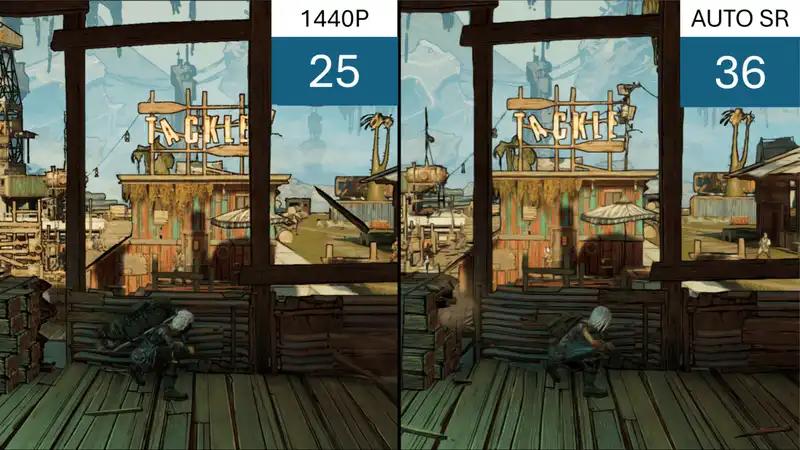The news that Microsoft was developing its own AI-powered upscaler for games called automatic super resolution first came to light on May 2, before it was revealed that the system was only available on Copilot+AI PCs. At the moment, the only system in this ecosystem is Snapdragon X laptops from Dell, Asus, MSI and others. However, as Microsoft explains in a blog about how automatic super resolution works, a PC could become available to more gamers simply by having the right NPU on its main processor.
Super resolution, or commonly called upscaling, involves rendering a frame at a lower resolution before performing a bunch of mathematical operations to increase the resolution to the resolution of the monitor. The obvious advantage is that the game runs much faster, but upscaling often creates a lot of visual artifacts, especially with transparent objects, particles and fast movement.
Nvidia uses a convolutional neural network through the Tensor cores of GeForce RTX graphics cards to scan up-scaled frames and clean up problems. Intel does the same with Arc-specific XeSS, but its generalized version is the same as AMD's FSR - many clever shader routines compute the best possible upscaling frame, rather than using AI.
Microsoft's automatic super-resolution (ASR) is a bit similar to DLSS and Arc-only XeSS in that neural networks are used in upscaling algorithms. However, ASR does not use a specialized core on the GPU, but rather runs the network on the NPU, a neural processing unit. At the moment, these are only found on certain Cpus (Meteor Lake from Intel, some Apus from AMD, and Snapdragon X from Qualcomm) and handle common math routines in AI workloads.
The idea behind including NPU in the processor is that you can offload the AI stuff from the CPU or GPU and run it on the low-power part of the chip. It's a bit similar to the matrix core that's on top of the Intel Alchemist GPU. However, even if you have a PC with one of these chips, which is currently limited to Copilot+AI PCs that use Snapdragon X processors, you may not necessarily activate ASR because such laptops don't have powerful GPUs, so gamers should enable upscaling whenever possible to make sure they can play. I want to make sure that it runs at its best as long as it can. This usually depends on developers integrating DLSS, FSR, or XeSS into their games, but ASR bypasses that requirement entirely.
That's the good news about ASR. Well, here's not very good news.
By using simple toggles on Windows, upscaler with NPU is automatically applied (and hence named) to games compatible with ASR. Unfortunately, there are not many games on that list — in total only 14 and 11 are guaranteed to work now. IT'S ALSO WORTH NOTING IN THE MICROSOFT BLOG THAT UNLIKE DLSS, FSR, AND XeSS, ASR DOES NOT RELY ON TEMPORARY FRAME INFORMATION FROM THE GAME. Instead, it transfers a fully rendered low-resolution frame to the npu, which uses a large convolution model to handle the upscaling and image correction process. When it is done, you will see a frame with full resolution.
Other upscalers work perfectly within the domain of the GPU, helping to ensure that everything is processed as fast as possible. Microsoft says that using NPU like this for ASR adds a "frame of latency" to the game, but "In our tests, most players do not notice this delay, and at that time sharper graphics and faster frame rates compensate for it, resulting in an overall improvement." It is improving the gaming experience.
This is something you won't get with an upscaler, and given that Qualcomm's Snapdragon X range supports AMD's FSR system, gamers and developers should be able to use Microsoft's upscaler. The evidence, of course, is in the pudding, and if the automatic super resolution works well despite its limitations, Copilot+AI PC owners will at least enjoy a decent gaming experience
in theory, at least. When you get a Snapdragon X laptop in the office, be sure to do a thorough test.
.

Comments